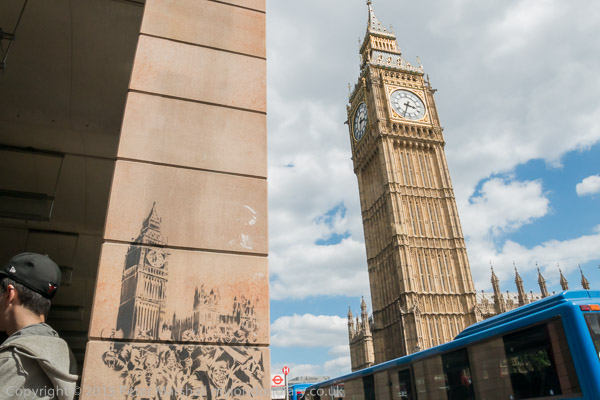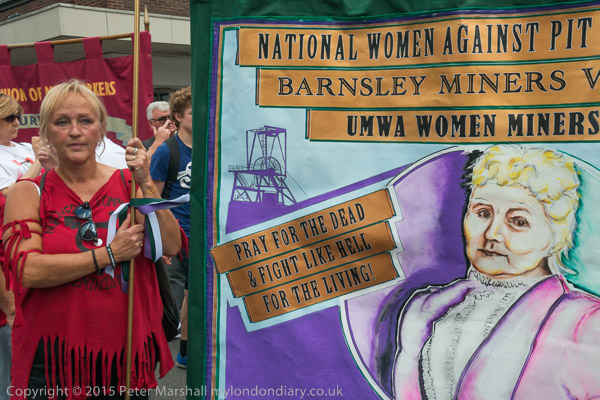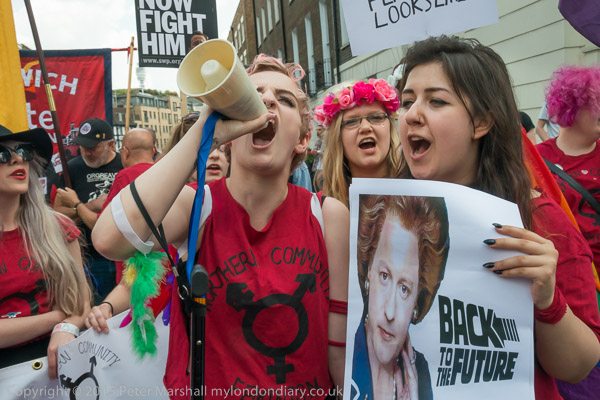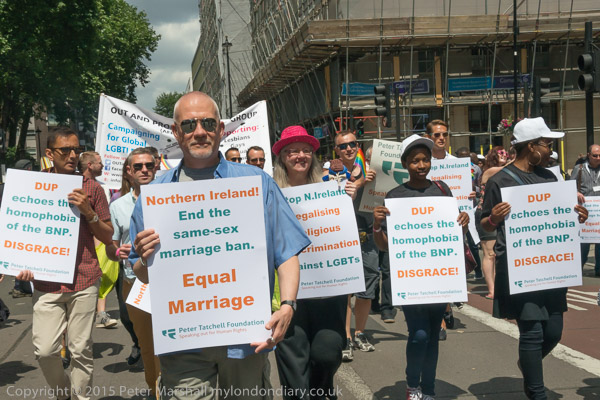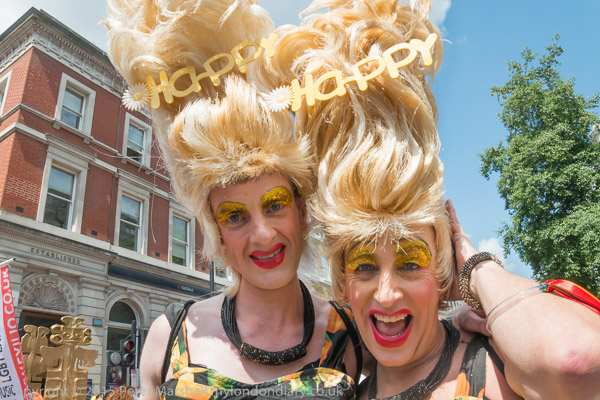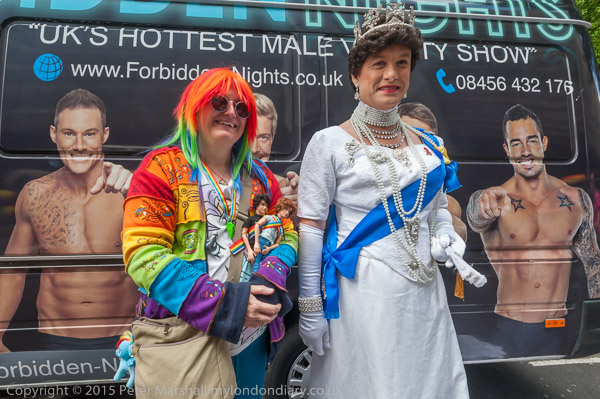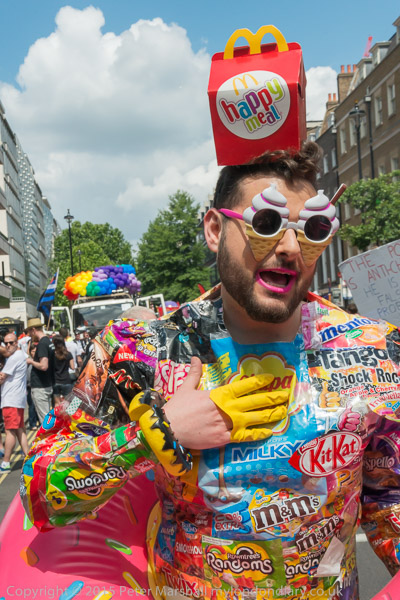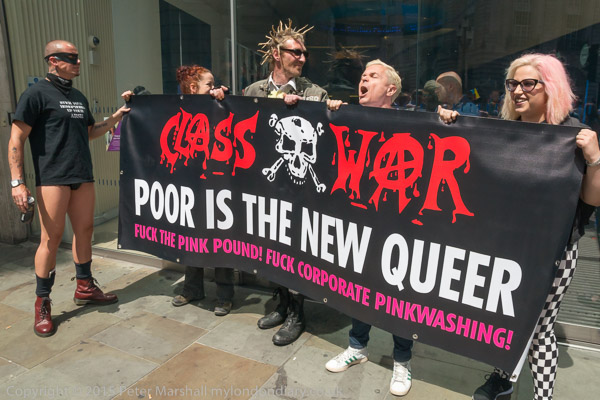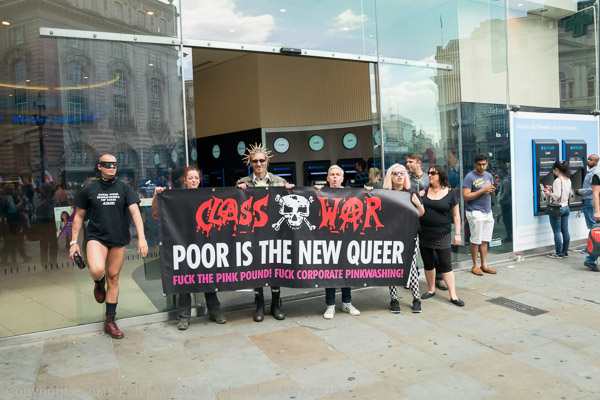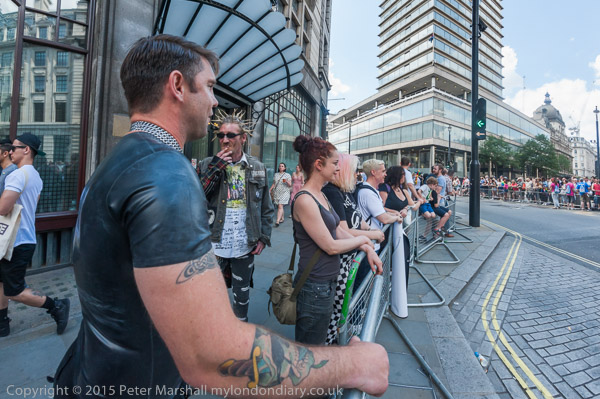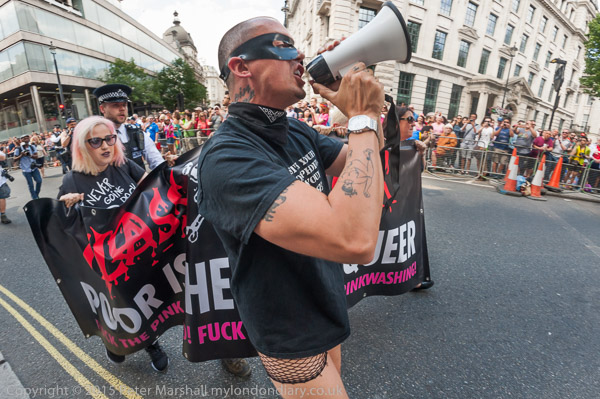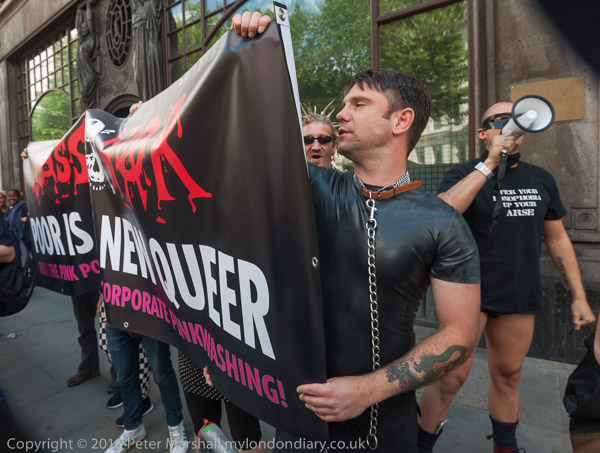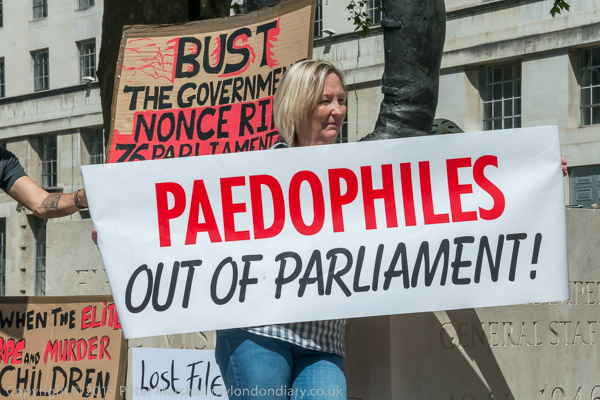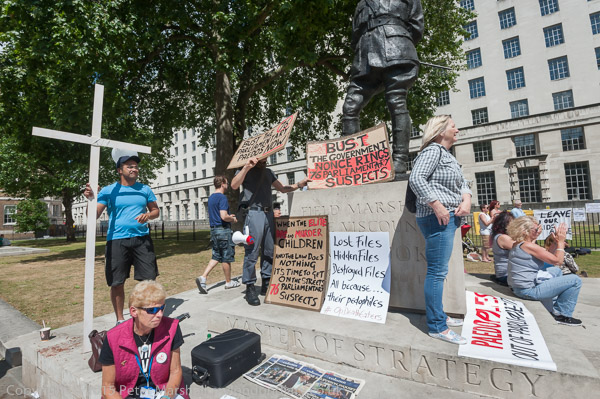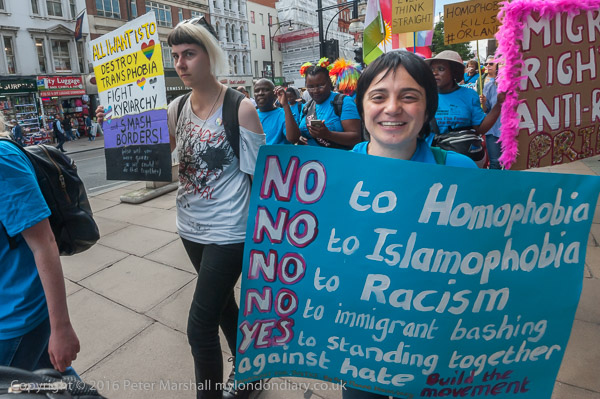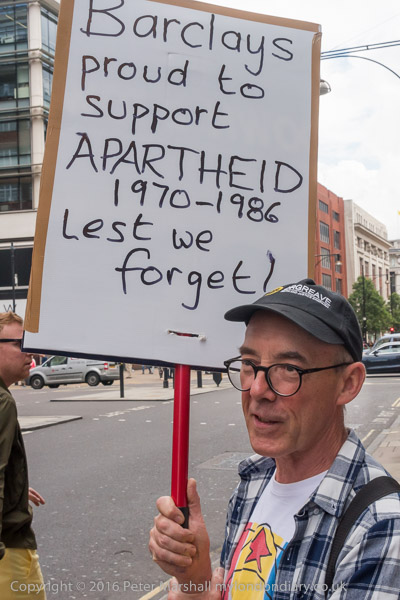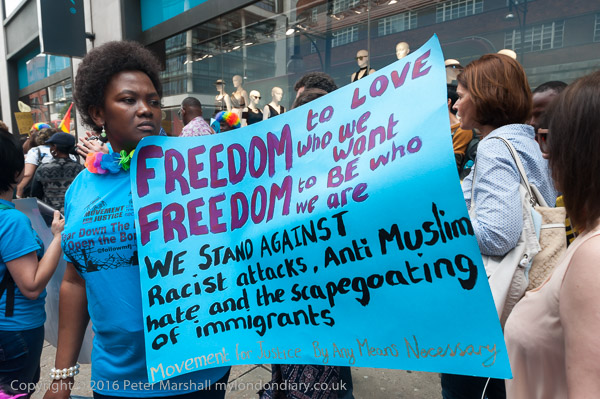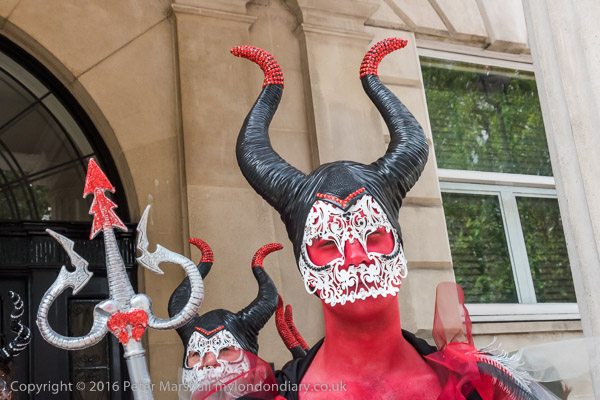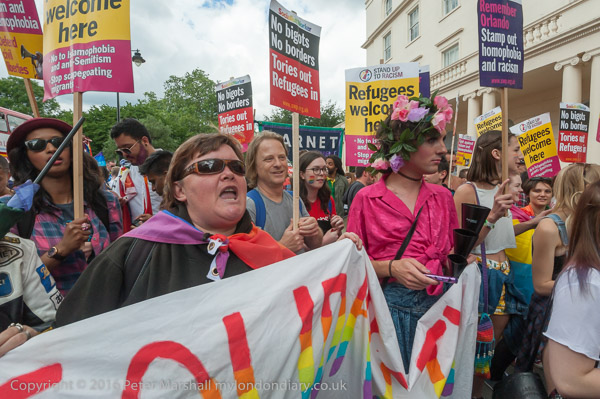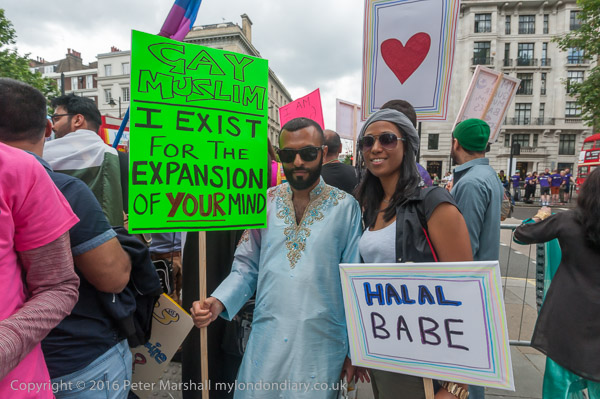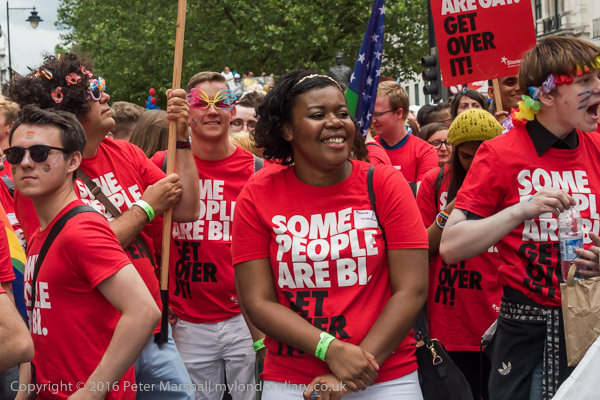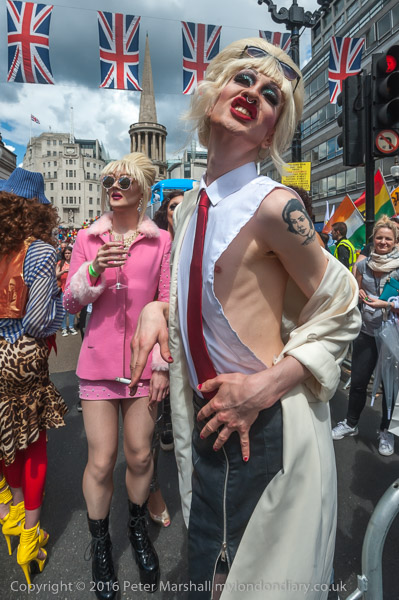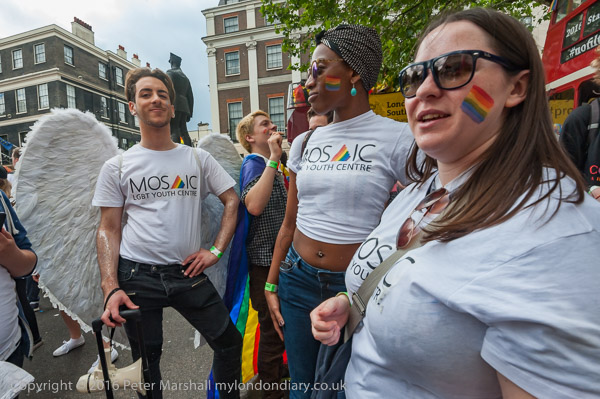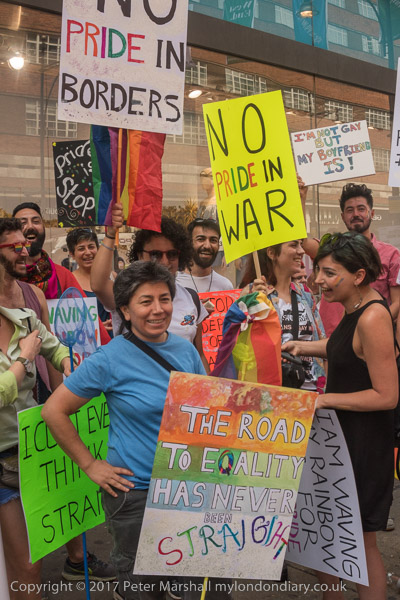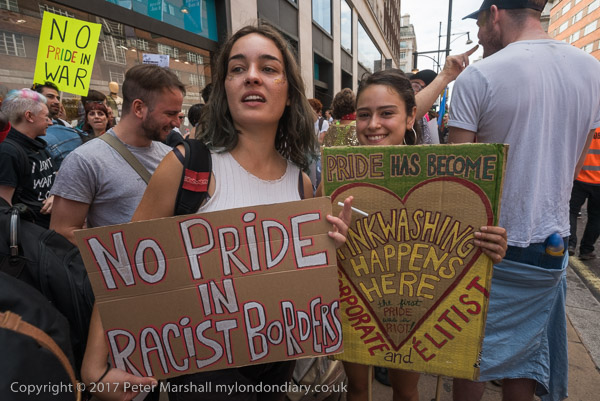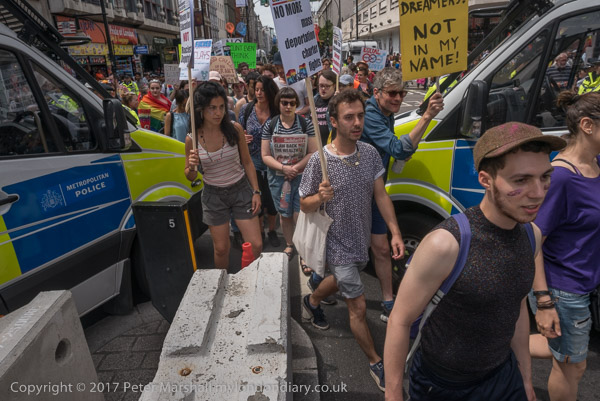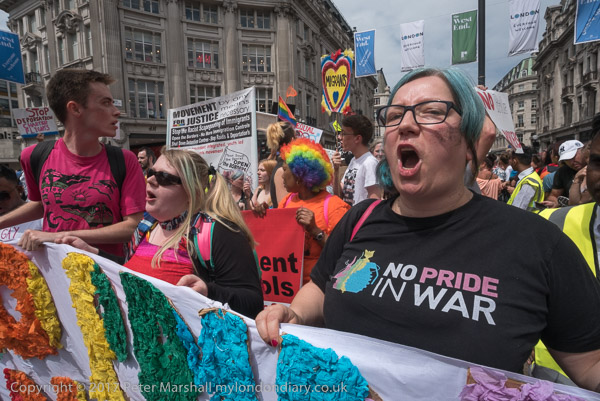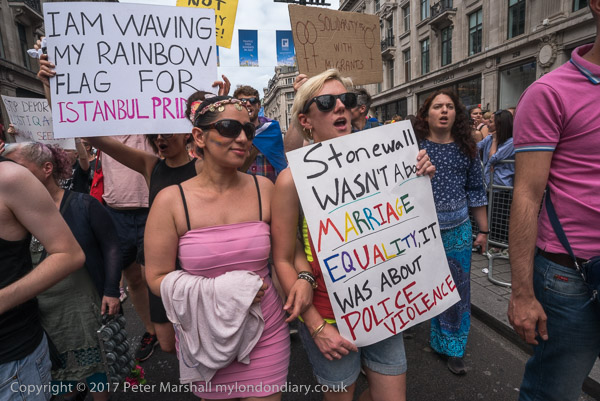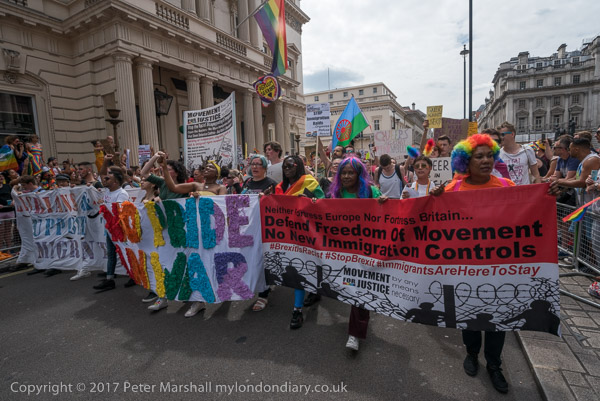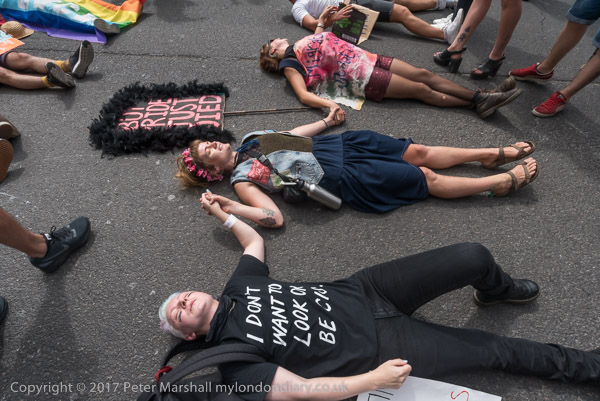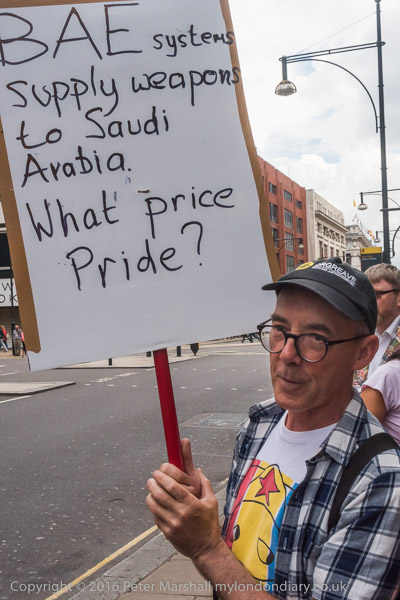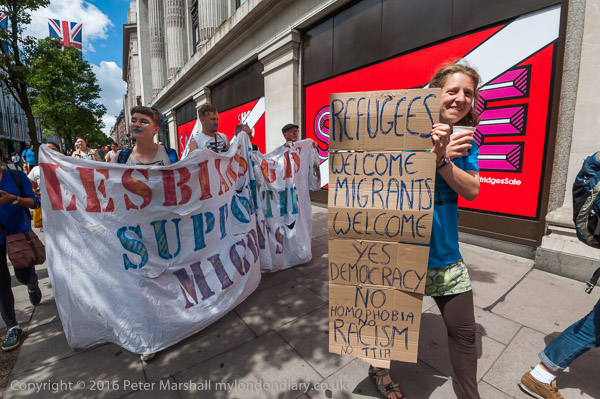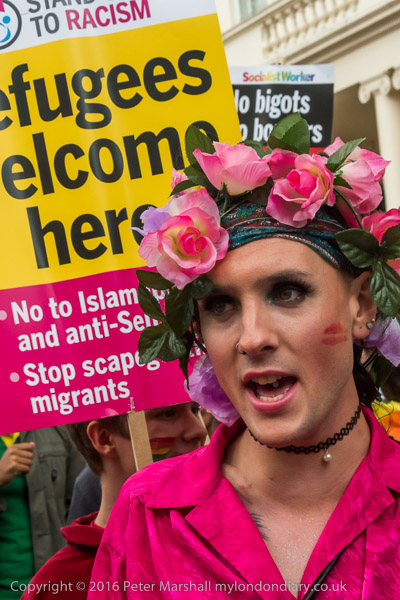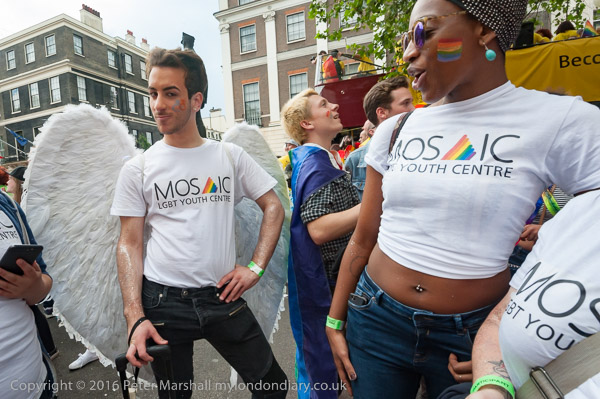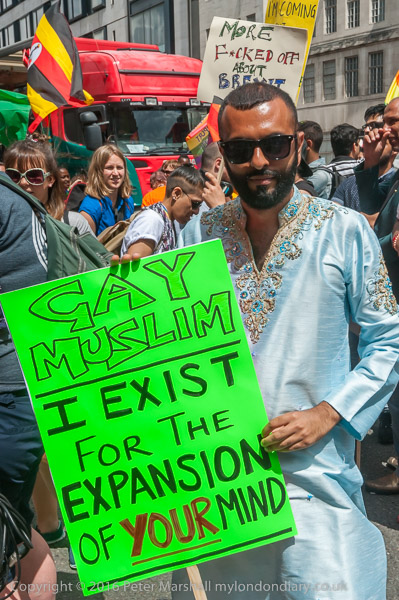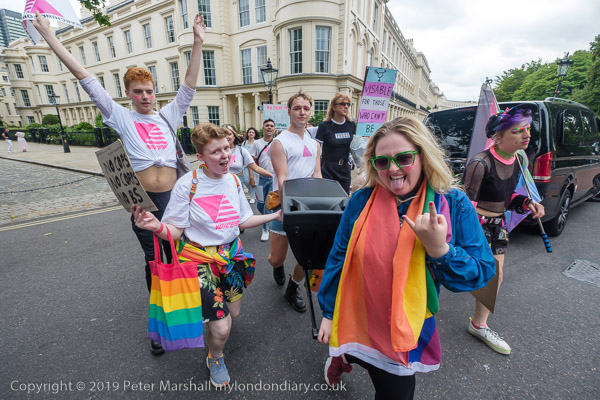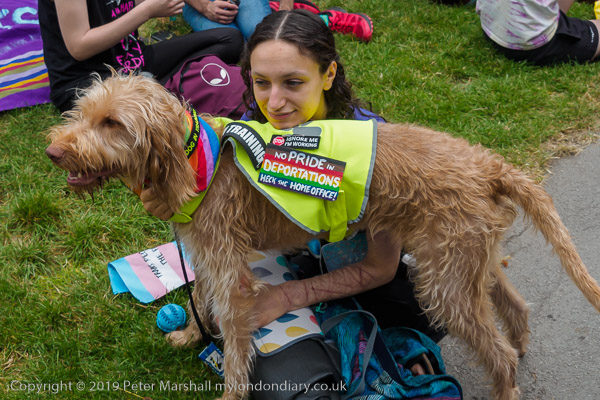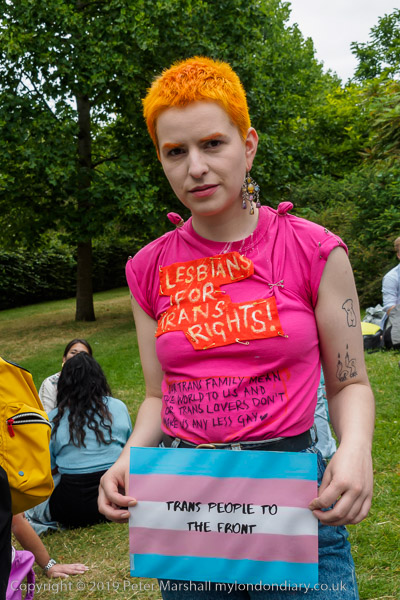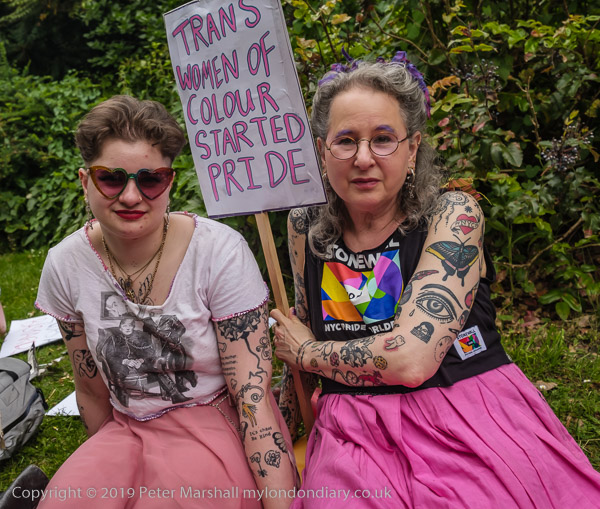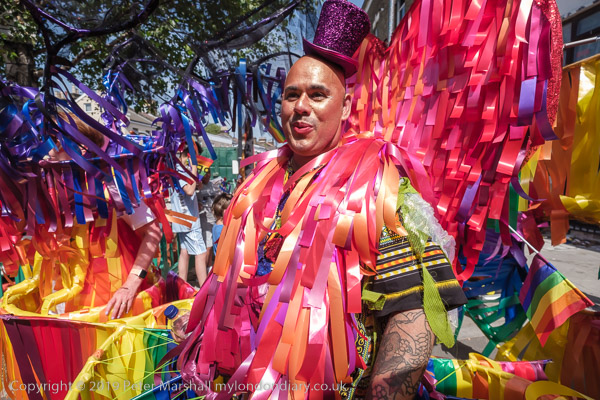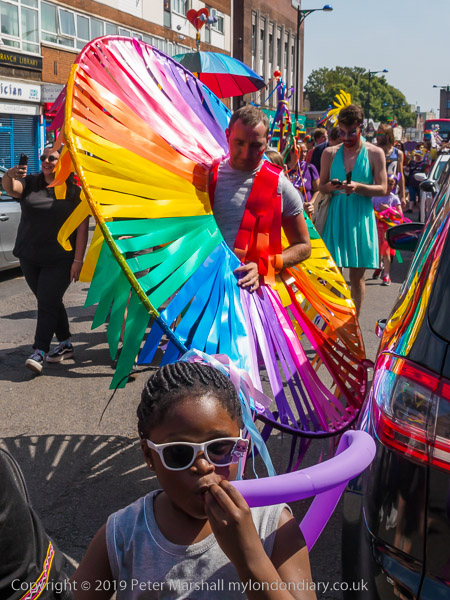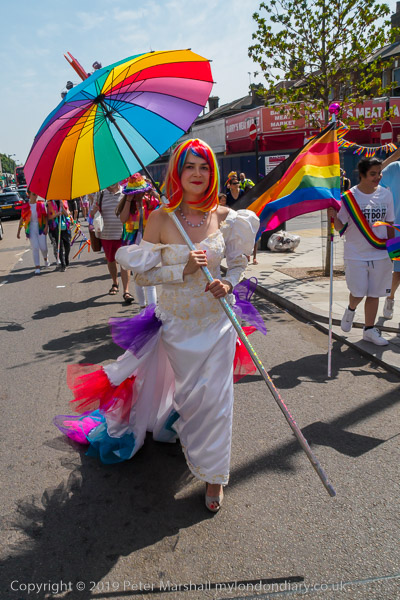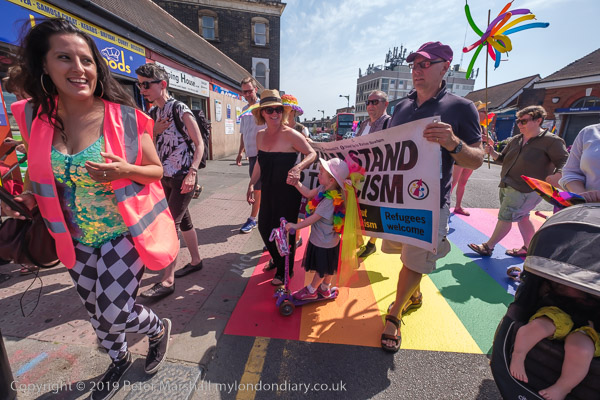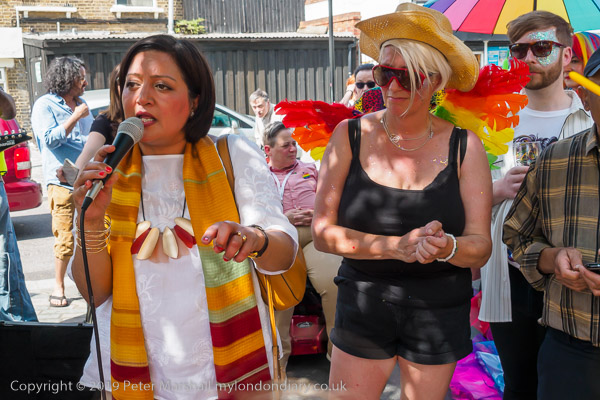World Pride & Spanish Civil War. On Saturday 7th July 2012 there were two events taking place at the same time and I was determined to cover both. Fortunately having begun at the start of the WorldPride procession in Marylebone I was able to jump onto the Bakerloo Line to Waterloo and photograph the annual International Brigades Commemoration at Jubilee Gardens before returning on the same line to Charing Cross to photograph the end of the march.
WorldPride London – Portman St & Westminster
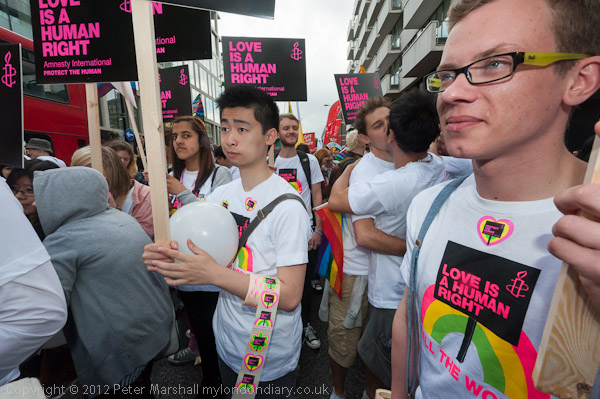
Pride almost didn’t happen in 2012 as the organisers were met shortly before the event to provide financial assurances to the GLA, Met Police, Westminster Council, London Fire Brigade and Transport for London, which they were unable to do. Quite why London Mayor Boris Johnson decided to try to stop Pride in this way is not at all clear.
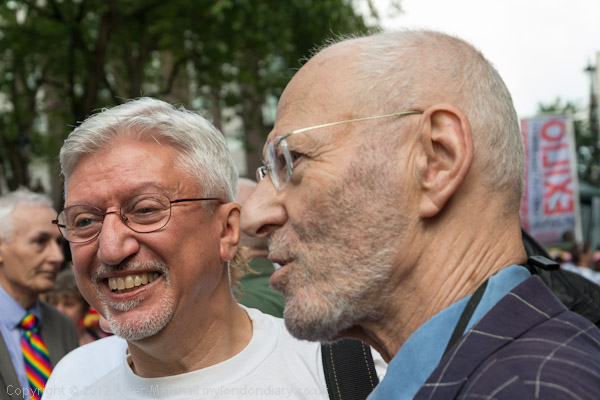
So rather than the planned event they decided to stage a ‘peaceful protest’ march or ‘procession’ specified as a democratic right under the Public Order Act 1986. This meant there were none of the corporate floats that have in recent years come to dominate the event, although company staff still marched in their company outfits.
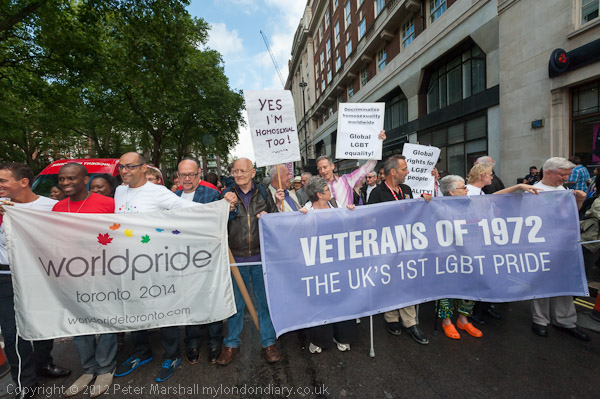
Gay Pride had in recent years lost much of its political edge, becoming a carnival of different lifestyles and a commercially sponsored jamboree, with large and expensive floats. Without these, although the corporates were still present, everyone was on the street together and the whole event seemed more intimate.
WorldPride 2012 was again a protest – as it used to be, though in a very different situation from when it began when for many that took part it was where they ‘came out’, taking the significant step in affirming themselves as gay and standing together against the prejudices of a society which was only just beginning to accept that being gay was not a perversion.
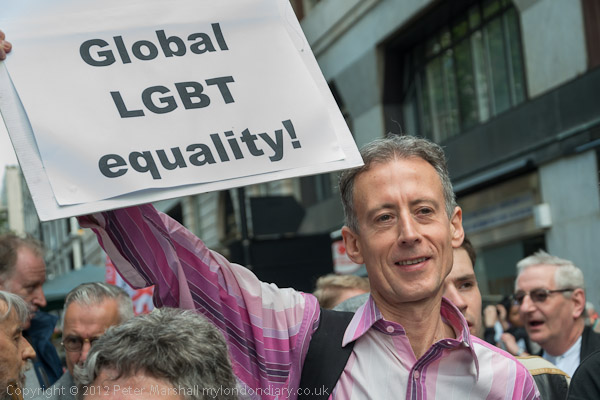
Of course there are still some communities in the UK where being gay remains unacceptable, and as campaigner Peter Tatchell reminded us, there are still some countries where people are being killed because they are gay.
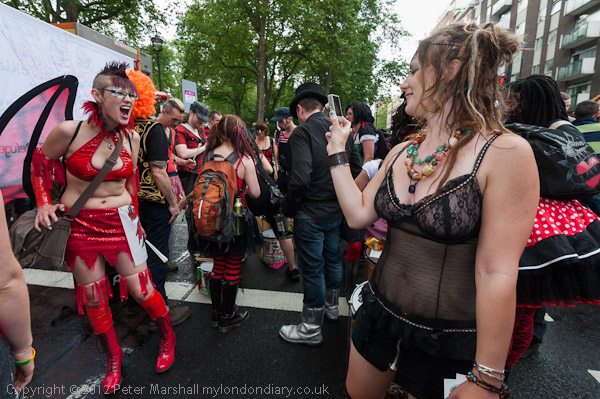
There were a number of heavy showers while people were arriving for the event, and many put off arriving as late as possible. Although at first it looked as if the event might be a washout, by the time I was making my way towards Baker Street station the street was tightly packed making my progress slow.
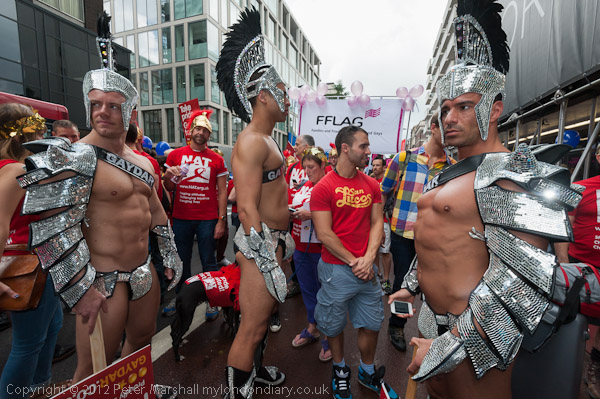
When I returned to photograph marchers at the end of the event in Whitehall and Pall Mall I had missed the front of the march, but there were still many arriving hours after the procession had begun.
Sacrifice For Spain Remembered – International Brigade Memorial
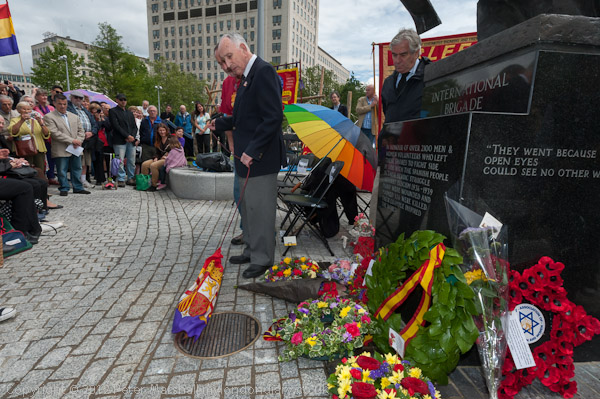
The annual International Brigades Commemoration has been on the same day as Pride in several years, and recording both has often been a problem. I was particularly keen to be there this year as it could well be the last to be attended by any of those who volunteered to go to Spain.
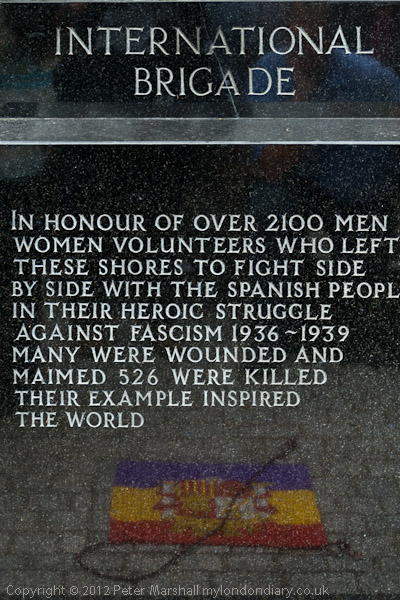
The war in Spain began in 1936, 76 years earlier. A new plaque was being unveiled in Jubilee Gardens by David Loman who was an 18 year old Jewish lad, David Soloman, from the East End when he went to fight in Spain in 1936, changing his name to Loman (also know as Lomon) because it was illegal. He was captured by Italian soldiers in 1938, surviving some months in a prison camp before being repatriated. He served in the Royal Navy in the Second World War and like other surviving members of the International Brigades he was awarded Spanish nationality in 2007 for his services to the Spanish nation and presented with a Spanish passport in 2011.
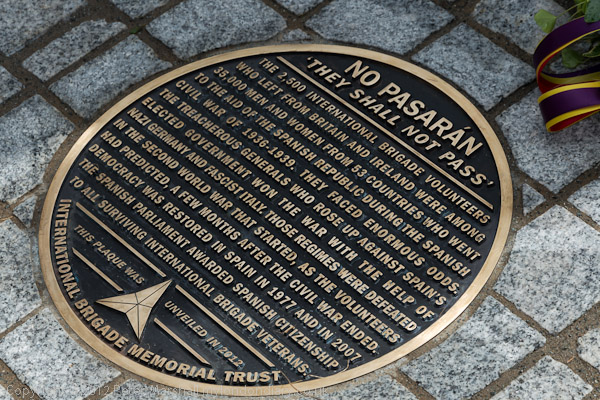
Now 94, and looking very sprightly Loman is one of only three remaining British veterans – the others being Lou Kenton then 103 and Stanley Hilton. Both Loman and Kenton died during before the commemoration in 2013. Hilton, who was living in Australia, died in 2016 aged 98.
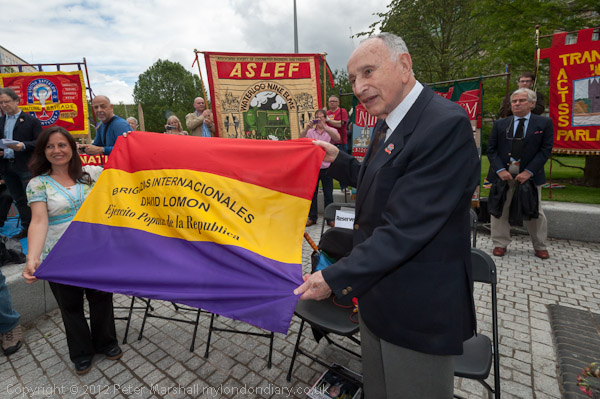
There were many family members of those who fought in Spain at the commemoration, and there were a number of speeches and performances by folk musician Ewan McLennan, performance poet Francesca Beard, singer-songwriter Paco Marin and folk duo Na-Mara, but Loman was definitely the star of the occasion.
More at Sacrifice For Spain Remembered.
